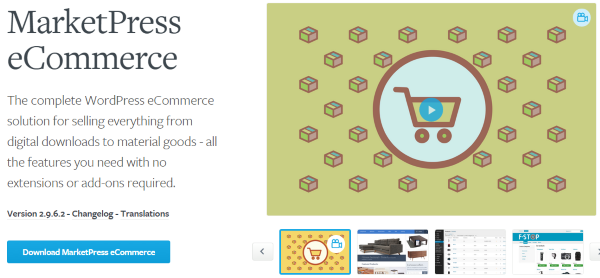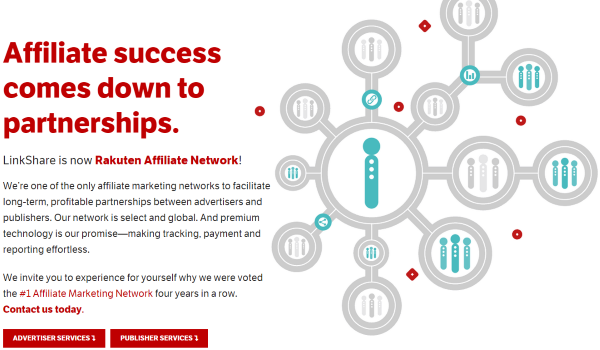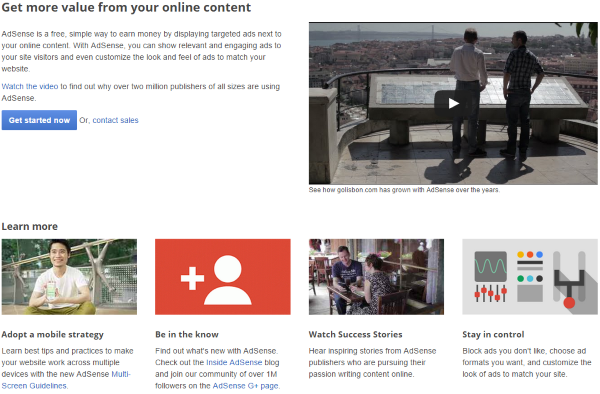 Monetizing your website has been a buzzword around WordPress circles for many years. It’s simply the act of making money from your website. It doesn’t even matter what kind of site you have. It can be a blog, an online store, a school, etc. If it has visitors, you can make money from it. It’s not even that difficult to implement. The key is knowing what kind of eCommerce model your site needs.
Monetizing your website has been a buzzword around WordPress circles for many years. It’s simply the act of making money from your website. It doesn’t even matter what kind of site you have. It can be a blog, an online store, a school, etc. If it has visitors, you can make money from it. It’s not even that difficult to implement. The key is knowing what kind of eCommerce model your site needs.
In this article we will look at several monetization strategies and how to implement them on your WordPress site.
Monetization Methods
There are several different ways you can monetize your site. The three most popular are:
- Sell products – this can be your own products or products you purchase for resell.
- Affiliate links – you get a portion of a sell when buyers go through your links.
- Display Advertising – you get paid either by the number of times the page with the ad was viewed or the number of clicks the ad has received.
1. Sell Products – Creating an Online Store
The advantage of an online store is you keep the revenue. You’re not sharing a large chunk of the sale with someone else. This is your store. You have control over every aspect of it from prices to the types of products you sell.
The disadvantage is you have to handle sales, inventory, and shipping (at least for physical products). You also might have a lot of competition for those products, so you’ll need a competitive advantage such as unique products or amazing prices.
WooCommerce

WooCommerce from WooThemes is the most popular eCommerce system for WordPress. It’s a free plugin that lets you sell both physical and digital products. You can even sale affiliate products. It includes order management, inventory management, coupons, shopping carts, and shipping systems.
Through your choice of free and premium add-ons you can add more shopping carts, shipping systems, memberships, and other features to fully customize your online store.
It’s completely customizable and includes shortcodes and widgets. It has a dashboard where you can view and print reports, upload products, and make all of your adjustments. It integrates with just about any theme. There are many themes built specifically with WooCommerce in mind and WooThemes even has an official theme called Storefront that’s completely free.
It’s not difficult to set up but it will take some time. Once you’ve set up your shopping cart and shipping methods you only have to deal with products, coupons, and orders. It’s intuitive to use and there’s documentation to help you get started.
MarketPress

MarketPress from wpmudev sets the bar high for eCommerce integrated systems. Everything is included in the stand-alone product so there are no extensions or special licenses required. It includes product and inventory management, payment gateways, multiple shipping options, coupons, CSS, marketing, and more. You can sell both physical and digital products.
It includes shortcodes and widgets, and is even compatible with multisite and BuddyPress. It includes detailed documentation and videos to help you at every step.
The pro edition adds:
- Multiple store styles
- Product personalization
- Google Analytics
- More payment methods
- Calculated shipping modules
The pro edition costs $19 per month.
2. Using Affiliate Links
Affiliate programs are some of the most popular methods of monetizing a website. Your site doesn’t have to handle sales of any kind. You simply talk about a product or provide a link. When visitors buy through your link you get a portion of the sale. Commissions have a wide range and can be anything from 1% to 50% or more. The downside to affiliate links is you don’t make money unless someone makes a purchase.
It’s a good idea to inform your readers of your affiliate links. Also, it’s not a good idea to talk about a product just for the sake of getting the sale. That becomes spammy and slimy. Readers see this as non-value added marketing for the sake of marketing and they will avoid your site. It is okay to write product reviews and talk about products in general. Just be honest about it. It’s also okay if you create the product, sale it on those channels, and make a commission for your own sales.
There are many affiliate programs available with all sorts of products you can promote. Here are the three most popular.
Amazon

Amazon is one of the most popular affiliate programs. It’s easy to use and implement and take advantage of the millions of products on Amazon. You can add text links, banners, search boxes, images, an e-store, widgets and lots more to your pages, posts, sidebars, header, and footer. You can place links on any text or image. You can use the links on your website, in your newsletters, and in your social media campaigns with a different tracking ID for each.
There are multiple types of search boxes, banners, and widgets. You can gear them toward specific items, keywords, or keep them generic. You can also style them to fit your website.
Affiliate commissions range from 4% – 7%. It starts at 4% and climbs as you sell through the month. The more you sell the faster it climbs. It starts over at the beginning of the next month. You get a portion of all sales that were generated through your link. For example, if you have a link to Windows 8.1 and someone clicks on your link, but instead of buying Windows 8.1 they buy a new PC, a set of golf clubs, and a DVD, you get a portion of the sale for all of those items.
It has daily reporting with tracking ID’s so you can know which links are effective. Payments can be in the form of an Amazon gift card, direct deposit into your back account, or a check.
ClickBank

ClickBank is one of the largest online retailers. They offer a place where product creators can sell digital products and affiliate marketers can promote those products on their own sites. There are 6 million product creators on ClickBank with products to choose from. You also get recurring commissions on subscriptions.
Commissions can go up to 75%, although most are much less. It’s not uncommon to see commissions in the 25% – 50% range. There’s a job venture program where you can split commissions with other ClickBank partners, which is excellent for joint ventures.
After creating your account you simply find a product you like and promote it. This can be in the form of articles or reviews with links back to the product. Buyers buy through ClickBank which already has over 200 million customers. Your affiliate cookie stays good for 60 days.
It includes detailed analytics so you can get information about impressions, clicks, and sales for items that you promote.
LinkShare

LinkShare, now Rakuten Marketing, connects publishers with marketers. Revenue Performance voted Rakutan Marketing the #1 affiliate network, edging out Commission Junction with the quality of their advertiser support.
It includes a dashboard with reporting features to track trends, transaction reports, and tools to upload ads, coupons, and feeds. It also includes a suite of cross-channel tools for omnichannel marketing so you can optimize multi-channel marketing campaigns.
You can find products to fit your campaign by searching for product category, the amount of traffic a product gets, consumer geography, and more.
VigLink

VigLink scans your content and automatically inserts unobtrusive affiliate links onto your keywords and links. It has 260 affiliates that include big names and major brands. Commissions range from 4% – 40% or more. Some pay by dollar amount, ranging from $15 – $200. Others pay per click.
There are several types of links:
VigLink Convert will convert regular links into affiliate links. The links will be associated with the leading advertiser. It does this without making any changes to the user experience.
VigLink Insert will look through your content for keywords and then place affiliate links on those keywords. I like the way the links within the text work. They don’t have any annoying pop-ups. They’re just simple links. Readers can easily avoid them if they want to. If the keywords already have affiliate links it will reassign them to higher paying links if you want it to. The best part is you don’t have to do anything at all. The links are assigned automatically.
VigLink Anywhere allows you to create and share your links across social networks, in your newsletters, and other platforms.
All of these features are adjustable and you can turn any of them on or off. It includes an automatic disclosure message so your readers will be aware of the affiliate links.
There is a dashboard where you can see your reports and make changes to the way your links work. You can see what content is popular, which articles and keywords drive the most revenue, where your readers go when they leave your site, and compare multiple channels. You can download your reports as a CSV file.
This is one of the easiest and smoothest affiliate programs that I’ve tried. It all comes down to the keywords in your content (keep it natural to avoid it feeling like “keyword stuffing”) and building your traffic.
3. Display Advertising
There are two main types of payment models for ads: pay-per-click and pay-per-impression. The advantage in ads is you get paid whether the visitor makes a purchase or not. The disadvantage is the payout is very small.
For example, you might get a few cents for every 2000 clicks on an ad. This will add up over time, but it’s difficult to make a lot of money with it unless you have a lot of traffic. Also, the ads must be relevant to your audience. Dogfood ads on a website that talks about iPhones will be ignored. Ads for iPhone accessories however, would be of interest to your audience.
Google AdSense

AdSense is Google’s advertising program that places ads on your website based on your content. It’s probably the most widely used ad program on the Internet. Advertisers bid on keywords and you get paid accordingly when your readers click on those ads (making this a pay-per-click advertising system). You can style the ads to fit the look of your website. You can place the ads within your content, your sidebar, header, footer, etc.
As an example, if you write an article about taking a course in photography, AdSense will pick up on the keywords “course” and “photography” and display ads for courses in photography. You’ll get paid based on the value of those keywords.
The downside to this is if the word can be used in more than one context you might have ads you didn’t intend to have. This can be very bad. Fortunately you can block specific types of ads. Unfortunately you have to do the work of blocking those ads. There are lots of relevant ads in practically any niche you can imagine.
There are reporting tools that give you detailed data so you can know how your ads are performing and show your performance against different metrics. AdSense also has an interface that’s optimized for mobile devices so you can access your account on the go. You can see your earnings, get alerts, and view reports from your phone.
Selling Your Own Ad Space
Of course you don’t have to go through a network to have banners on your site. You can sell your ad space directly to buyers. They can pay you a set amount, by the number of page views, or by the number of clicks the ad receives.
Rates are usually determined by CPM (cost per 1000 impressions). Each niche is different and a lot can be said about how to determine what your rates should be. Also it changes over time, so any number you choose today might not be good a year from now. With that said, here are some basic guidelines on how to determine your rates.
Look at what others are charging in your niche. Adjust your rate according to your traffic as compared to theirs. This doesn’t show you how to calculate it but it can get you a ballpark figure that you can use. If you can only get the info from a site outside your niche then look at what Google AdSense charges for the keywords you use compared to what they use and adjust your rates accordingly.
Calculate with a basic formula. For example, you might use $1 per 1000 page views per month for the average. Use Google AdSense to determine if your keywords are above or below the average price and adjust accordingly (this is just to help get a ballpark figure. Google is pay-per-click whereas this is pay-per-impression). For example, if Google pays more than average for your keywords then you might consider $1.25 or $1.50 per 1000 page views. If your site gets 1000 page views per day, your formula would be 30,000/1000 = 30. 30 * $1.00 = $30 per month per ad.
Ads above the fold (what’s showing on the screen after it loads without having to scroll down) are more valuable than ads below the fold. If your price per 1000 page views for above the fold ads is $1.00, below the fold might need to be $.75 or $.50.
As your traffic increases, your CPM also increases. This is a starting point and it isn’t rocket science. Basically, get what you can without running your client’s off. It might be easier to start high and lower your price than start small and raise it later. Keep in mind what your market can support.
Final Thoughts
This just covers a handful of the many ways you can monetize your WordPress website. Adding an eCommerce store, inserting affiliate links, or displaying ads on your website isn’t that difficult and there are plenty of free tools to make it painless for both you and your readers.
Selling your own products will usually get you the greatest payout without having to focus on building high traffic on web-content. Affiliate products get you a good amount of revenue, especially if you’re careful of the types of products you support. Banner ads require a lot of traffic but don’t require your readers to make a purchase or any extra work on your part.
Each of the strategies have their benefits and downfalls. I recommend experimenting to see what fits your business and website goals the best.
I’d like to hear from you. Have you tried to monetize your website using these methods? Have these monetization strategies worked for you? What other monetization methods have you tried with your website? Let us know about it in the comments.
Thanks for sharing these methods! This will definitively help me make money with my wordpress blog.